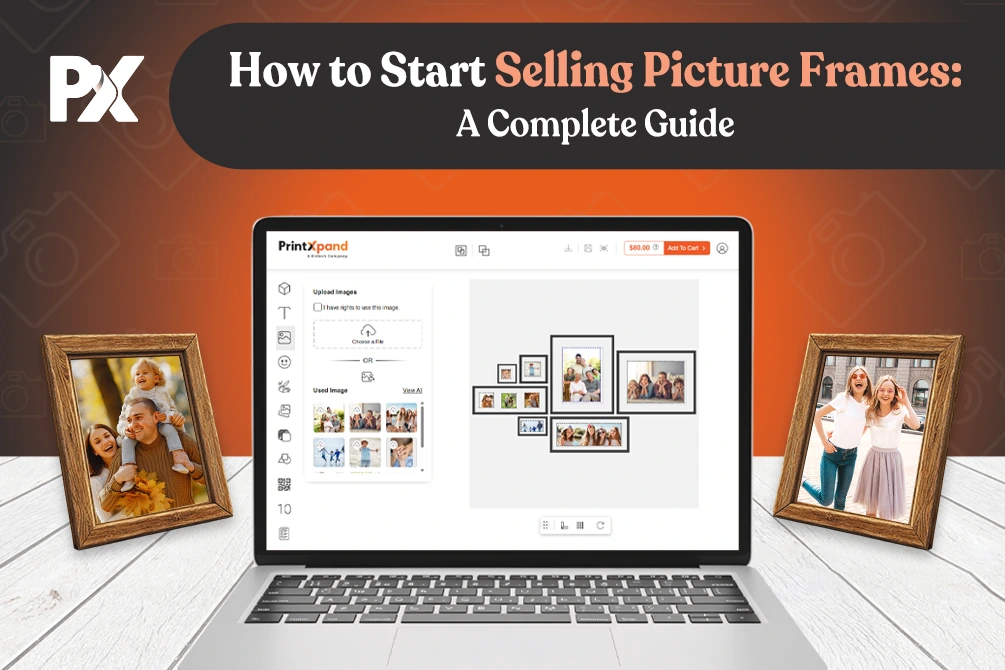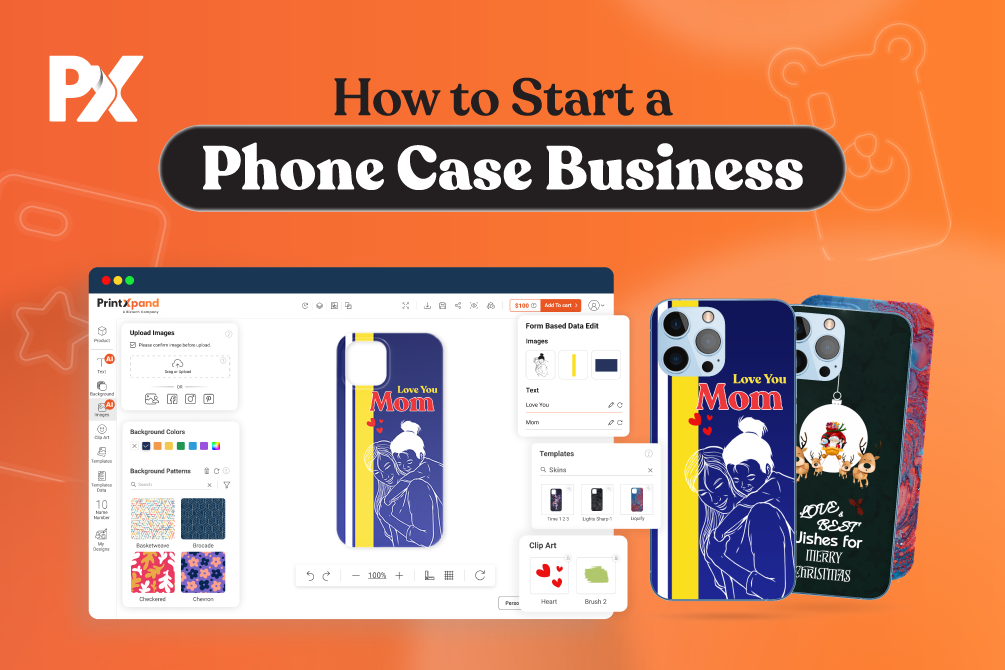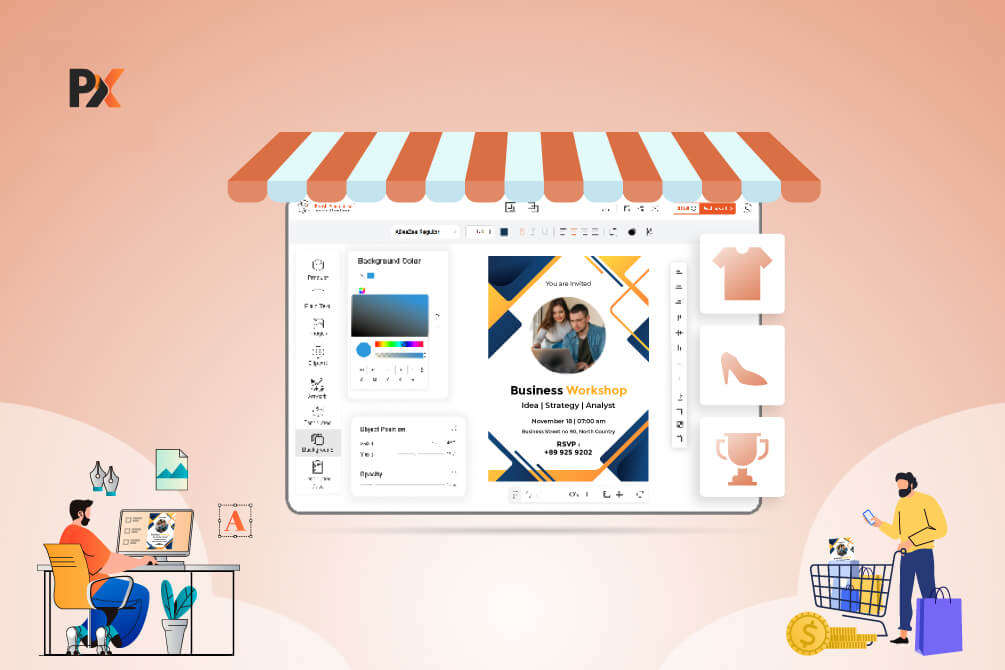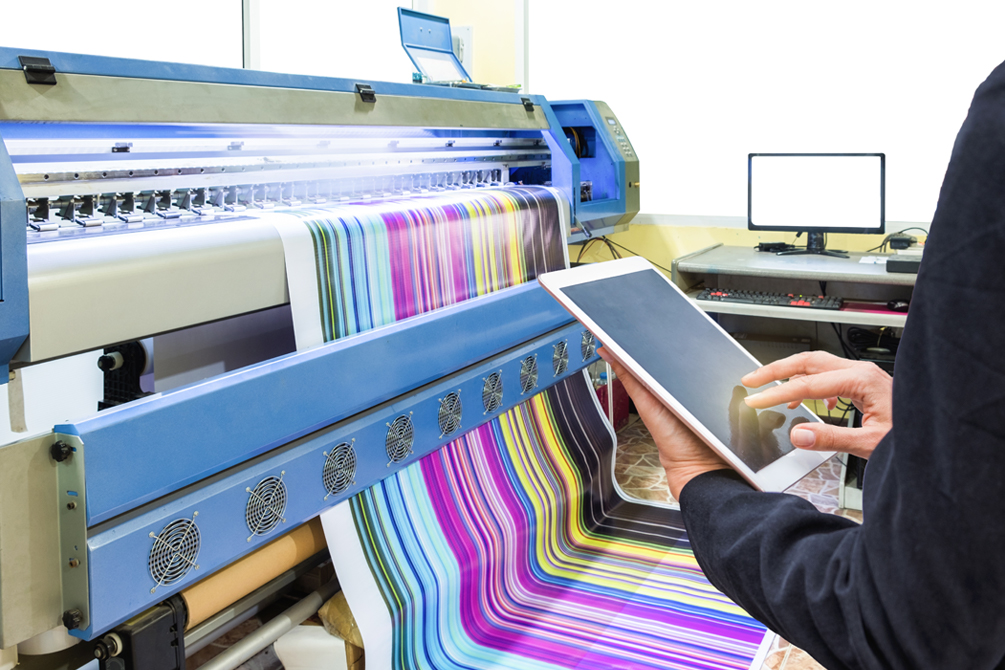
Robert Keane, was an MBA student at a business school in Paris when he observed that the printing needs of small business owners are not met.
They had only two options to print promotional materials – pay high costs to a supplier, or print their own materials.
As a solution to this problem, they launched a platform. He and his team developed patented technology that delivers professional-quality printing in small quantities.
They took the printing process from offline to online enabling both business owners and eCommerce customers to create their custom designs.
The printing business we are talking about is Vistaprint. Today, the company is one of the leading printing businesses in the world.
In the last few years, the printing business, especially digital printing, is one of the fastest-growing markets. Reports suggest that the Digital Printing Market is valued at a CAGR of 6.45% over the forecast period 2020 – 2025.
To shed some light on the information for starting an online print shop, we have prepared this guide. We will discuss how to start an online print shop and make your first sale.
A quick guide on how to start a print shop:
- Choose Your Niche and Finalize the Products
- Prepare Yourself to Operate the Business
- Develop Your Brand Identity
- Build an Online Store
- Offer Customization as Your Unique Selling Proposition
- Set Up a Printing Infrastructure
- Set Up Logistics Infrastructure
- Make Your First Sale
Choose Your Niche and Finalize the Products
When you are trying to find the niche for your online print shop, you need to narrow down the choices and focus on a smaller yet well-defined segment.
Take for instance a millennial who just loves Star Wars. They spend hours re-watching and reading fanfiction. When they stumble upon a t-shirt brand that sells Star Wars merchandise, they are likely to browse through to the site and end up purchasing if it is convincing enough.
Your goal is to find such a well-defined distinct segment within the market.
How to Find Your Niche Market
When finding a niche for an online print shop, try and find a balance between your passion and profit.
When you only follow your passion and not consider if the idea is viable then there is a problem. On the other hand, if you are emotionally invested in your brand then you’ll have the strength to persist when you face challenges.
The best ideas for a niche product will come from your experience. Do some soul-searching and you will get insights into your interests, values, and passion.
The profit comes from understanding what your audience likes and analyzing current trends. Hence, research becomes one of the most important parts of the ideation process.
These are the three ways that can help you in analyzing the market to find the best product from your online print shop.
- Google Trends is a great tool to start searching for trends. The tool allows you to search for keywords, explore relevant searches, and compare those queries by sub-regions or interests over time.
- By checking marketplaces like Amazon and eBay, you will get to know about thousands of products that are trending currently. That will help you in choosing a market that is in demand.
- Before launching a print store, start by knowing what’s already popular in the market. A good way is to research your competitors and check what they are doing.
Here are the most popular product ideas for the printing business
- T-shirt Printing
- Mug Printing
- Mobile Cover Printing
- Business/Visiting cards Printing
- Invitation and Greeting Card Printing
Apart from finding the next product for your business, it’s also a good idea to understand your customers at the beginning itself.
The more you keep your target audience at the forefront, the better your marketing will resonate with them, and the more sales you will get.
Customer-centric companies are 60% more profitable than companies without a customer-centric strategy.
What do you think is common between brands like Amazon, Sephora, and Zappos?
All these brands have customers at the center of their strategy.
Amazon uses curated recommendations for a better experience, Zappos centers itself around customer service, Sephora uses technology to deliver personalized shopping experiences.
In the same way, consider keeping customers at the center of your approach to drive better results.
Take your print stop a step ahead with customization. See how a Product Design Tool can help you sell custom products easily.
Now, let’s see how you can start building an online print shop.
Prepare for Operating the Business
After landing on a product idea, your next step is to clear the basic requirements to operate an online print shop.
This includes finding an appropriate name for your company and taking care of the legal aspects. When it comes to choosing a brand name, I am sure you have some names in your head. One of the major considerations when choosing a brand name is to check if it has great SEO potential.
Is SEO important for business names? One may ask.
On seeing your brand name, search engines will look for clues on what your website is all about.
Let’s say you start an online store selling t-shirts, and your target keyword is t-shirts. You might choose a domain name amazingtshirts.com.
When you include relevant keywords in the name, search engines see that as a connection on how you want to rank – a website with the name amazngtshirts.com must be selling t-shirts.
Tools like Ubersuggest makes it easier for you to check if the name has SEO potential. As you can see in the image, the tool gives an overview of the search volume, CPC, etc for the keyword.
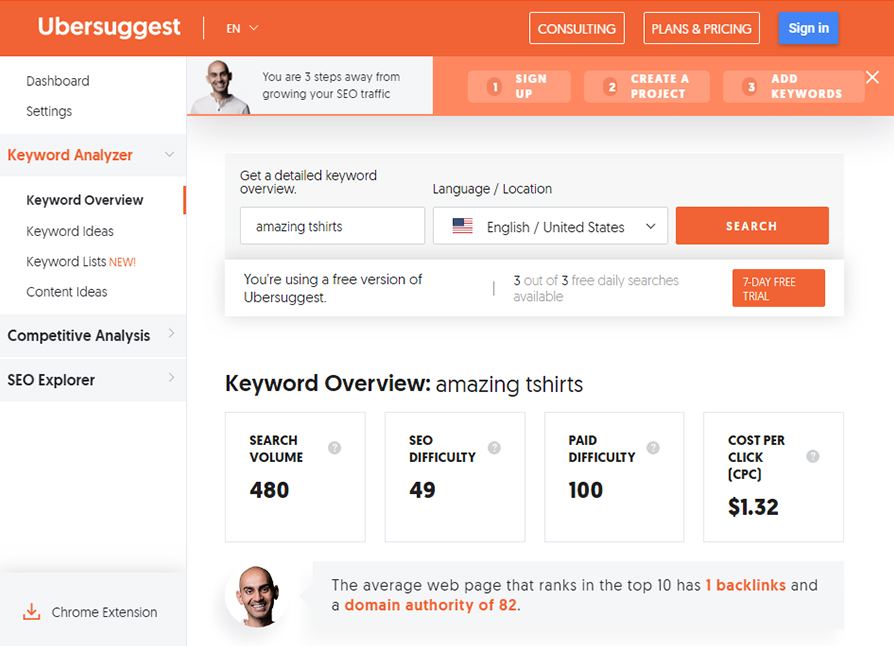
It is not a rule to have a name that should stick to SEO guidelines. You can pick a catchy and unique name for your online store.
Next, you need to comply with the legal requirements to start an online print shop. Here are the most basic licenses you need to take care of:
- Business Operation License that allows you to conduct your business in your city, county, or state.
- Employer Identification Number (EIN), a federal tax ID number that identifies your business as a distinct tax entity.
- Doing Business As (DBA) License gives you the opportunity to operate your online business under a name other than your own name.
- Seller’s Permit to sell goods or services online.
Every country/city/state operates differently. Hence, it is good to seek help from local authorities who take care of small business administrations.
Develop Your Brand Identity
Jeff Bezos says, “Branding is what people say about you when you’re not in the room.”
Long after you have made a sale, your customers will have an impression of how you made them feel. And a strong brand identity is that impression.
Take Coca Cola for example. The brand is more than 130 years old. Yet today when I say the name Coca-Cola, you probably can visualize the bright red logo, it’s a unique-shaped bottle, and the idea of a refreshing drink that lightens the burden of a long day.
At the heart of Coca-Cola’s brand identity is – a timeless logo and innovative advertisements.
‘A brand identity is made up of what your brand says, what your values are, how you communicate your product, and what you want people to feel when they interact with it. Essentially, your brand identity is the personality of your business and a promise to your customers.’ – HubSpot
Going by this definition, a brand identity is not just about the visuals like logo, colors, photography, typography, etc.
It is the totality of your brand’s visual identity plus your objectives, marketing message, what value you provide to your customers, customers’ shopping experience, etc.
Related Read: 11 Tips to Improve Brand Identity
The first step in building a brand that people love, is to discover your purpose. Asking these questions will help you develop a more distinguished proposition for your brand.
- What are the products or services you offer to your customers
- How your product/service differentiates you from the competition
- Why are you doing what you are doing
These questions are known as The Golden Circle. It is the most sought-after model in the business world. It can help you find the purpose, and provide the best value to your customers.
Build an Online Print Shop
The hunt for a home for your products starts by finding an eCommerce platform.
An eCommerce platform is an end-to-end software solution that allows you to manage your entire business – website building, managing inventory, managing payments, etc.
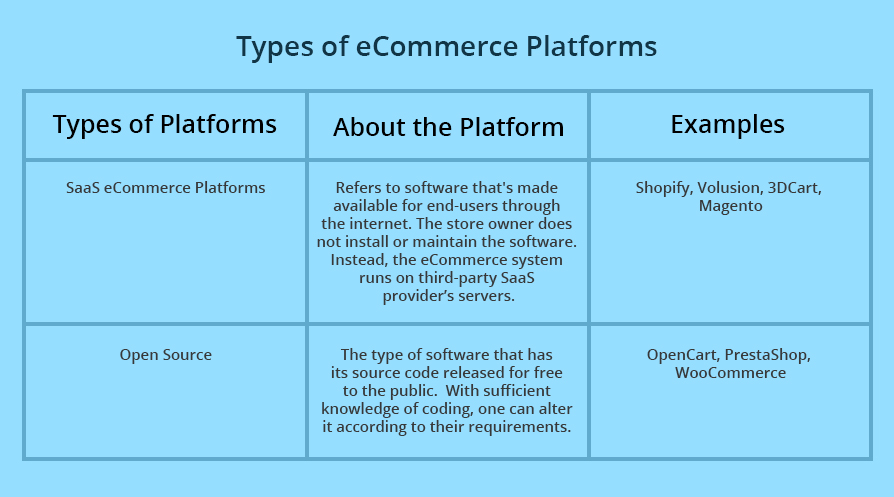
Here is an overview of leading eCommerce platforms and their market share.
WooCommerce Checkout and Shopify are the two largest eCommerce platforms. Their combined market shares in the USA make up to 46%.
In other words, nearly one out of every two online shops in the US use one of these two leading eCommerce platforms to sell their merchandise.
Third on the list is Wix Stores, which has 17% of the total market share.
Squarespace’s Add to Cart and Ecwid follow them with 11% and 6% of the eCommerce platform market share in the USA.
The other leading eCommerce platforms used by online businesses in the USA include OpenCart, Weebly eCommerce, PrestaShop, Magento, Zen Cart, and Big Cartel, each with much smaller market shares.
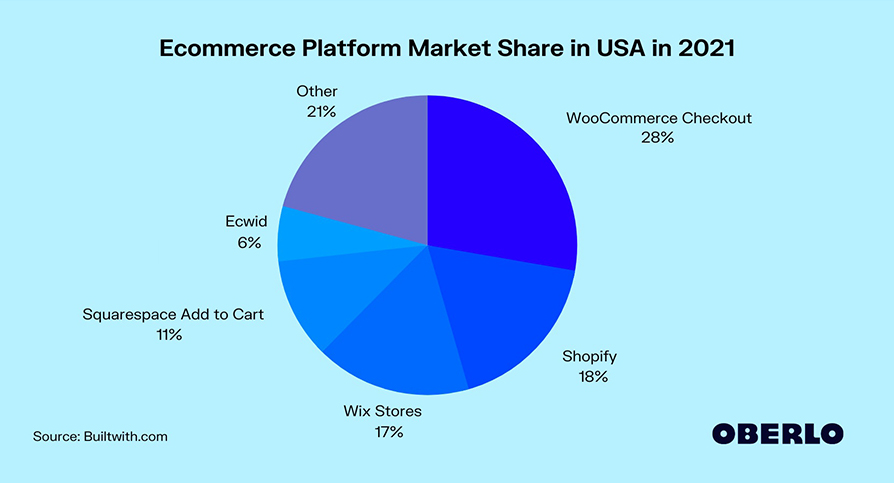
Quickly take your print shop online with ready Web to Print Storefront. Know more about the solution by clicking the link below.
Offer Customization as Your Unique Selling Proposition
Theodore Levitt, author, and professor at Harvard Business School says:
“Differentiation is one of the most important strategic and tactical activities in which companies must constantly engage.”
That’s when making your unique selling proposition helps.
A unique selling proposition is an answer to the question – how is your product/service different from the others?
One of the most important factors that differentiate one business from others is the price. However, that’s not the only consideration. Shoppers look for other indicators and values to determine their purchasing decision.
In fact, a study by Deloitte found that 1 out of every 5 customers is willing to pay 20% more for an exclusive product made for them.
Why? For the simple value that personalization provides.
Everybody loves products made exclusively for them. It creates an emotional connection with the product by giving them complete power to create and design the product the way they like.
A study ‘Emotional bonding with personalized products’ talks about the effect of personalizing a product’s appearance with the emotional bond.
The study interviews Dutch students who own a bicycle. Interviews filled out questions concerning their (non-) personalized bicycle support. By personalizing the product’s appearance, a person invests effort in the product. The findings show that the amount of effort invested has a direct effect on the strength of the emotional bond with the product.
The customized bicycles had a higher emotional value for their owners. Furthermore, the study showed that more effortful product personalization results in stronger emotional bonds.
For businesses, this dimension of product customization means loyal and emotionally bound customers. When customers can personalize products according to their taste and preferences, they feel that they have your undivided attention and they are likely to more often interact with your brand and become repeat customers.
Luckily, with technology, it is possible to offer product customization by integrating product design tools at the backend of your online print shop.
Product design tool is a Web-to-Print software with diverse features using which, your customers can create customized designs.
Users can browse from a huge library of images, texts, clipart, and ready templates to create personalized designs on any and every device.
eCommerce store owners are leveraging this software to give more freedom to customers by enabling them to design a variety of items like t-shirts, shoes, mugs, greeting cards, brochures, etc.
Moreover, the biggest advantage of a product design tool is that you can get rid of huge stock and inventory. Because the customers design their own product and not choose from what is available in the store.
Why don’t you see for yourself how you can leverage the power of personalization on your online print shop.
Set Up a Printing Infrastructure
You have your products, and estore ready. Now, it’s time to decide how you will handle the printing.
There are two ways you can do this
You can partner with a printing vendor. Quality print is crucial for a good customer experience. Hence, in your research to find the right printer, consider pre-ordering samples to check the quality.
Set up an in-house printing infrastructure which also means you have to invest in printing machines and hire professional help.
Set Up Logistics Infrastructure
While one may tend to overlook order fulfillment, the fact is that it is one of the crucial factors contributing to eCommerce growth.
38% of customers say that they will never shop with a business again if they had a poor experience.
Customers want the delivery quick and seamless, and for business owners, fulfilling the demand is easier said than done. These are the three most common order fulfillment models.
- Self-fulfillment Model
Self-fulfillment or in-house fulfillment is where the business owner manages the process right from storing inventory to shipping. For starters, this seems to be a good option because it does not involve spending additional money on third-party logistics providers.
However, managing orders takes up a lot of time. This means, there’s very little time for business owners to spend on attracting traffic, and increasing sales if they do not have a team to help them.
- Third-party Fulfillment
Here, the products that you purchase or manufacture are shipped at the 3rd party provider’s warehouse. When a buyer places an order on your online print shop, you contact the logistics provider who will pack the product, and arrange for the delivery.
The biggest advantage of this model is you need not invest in warehouse real estate. On the other hand, the con is if one fails to choose a reliable order fulfillment partner, there might be chances of failed deliveries that affect customer experience. Hence, it is a good idea to always research before partnering with a logistics firm.
- Dropshipping
Dropshipping is one of the most popular shipping models. Nearly 33% of online stores choose dropshipping as the fulfillment model. The reason is convenience. You have to neither worry about the product stock nor shipping.
Here, you do not keep the products you sell in stock. When a customer places an order, your store automatically sends the order to the dropshipping supplier who prepares the order and ships it directly to your customers.
There is a thin line between dropshipping and third-party fulfillment. In a third-party, you send your inventory to a fulfillment center that will take care of packaging and delivery. While in dropshipping, the drop shipper will manufacture the product themselves and fulfill the delivery.
Making the right choice depends on factors such as your budget, products, order volume, etc. Your assessment of your business needs will help you choose the right model.
Make Your First Sale
Closing the first deal is always a tricky thing.
Even if you have thousands of visitors coming to your online store, what is more, important is to convert them into leads.
There is this brand Pet Haus that sells exclusive stylish denim for dogs. Now, you can not approach random people on the streets and try to sell them denim for dogs. But if you know where pet owners hang out, that will pay off well.
Paid advertisements are a good way to get targeted traffic to your store.
One may rightfully question why spend when there is social media?
Well, social media platforms are a good place to create and increase brand awareness. But when it comes to getting qualified leads, advertisements tend to give faster results.
According to HubSpot, Facebook users are now seeing only 2% of organic results as more ad content is competing for the news feed. Therefore, a good strategy will be to support social media efforts with paid ads.
The most common types of paid advertising include social media ads, display ads, paid search ads, and native ads. Choosing the advertising channel depends on who you are targeting, and the tools that will allow you to reach them.
For starters, the ideal option is to opt for social media ads, and Google ads.
The major benefits of social media advertising are (a) reaching a specific audience with targeted features like demographics, geotargeting, keywords, etc. (b) use a variety of ad formats like story ads, photo ads, video ads, etc.
Social media paid campaigns includes:
- Facebook Advertising – Facebook allows targeting an audience based on interests, demographics, and geography. That makes it an ideal platform for businesses that have a clear idea about their target audience. For instance, if you’re printing business cards and brochures, you can easily reach the targeted audience using demographics or location.
- Instagram – As compared to other social media platforms, Instagram has the most engaged user base. With Instagram advertising, you can display your visual ad on others’ feeds to drive traffic. The price model on Instagram is based on CPC (cost-per-click) and CPM (cost per impressions), and prices that Instagram’s ad auction decides.
Another way to get targeted traffic is Google Ads. Google offers paid advertisements that appear in search results. It falls under the PPC marketing channel where you pay per click or per impression on an ad.
Google Ads allows you to create and share well-timed advertisements on mobile and desktop. That way, your business will show up on the search engine results page the moment your ideal customers are looking for products/services via Google Search. That will help you reach your target audience at the right moment.
There are several other ways and platforms you can leverage to attract the right audience to your online print shop. A common tactic that many online store owners use to attract first-time buyers is to entice them using digital coupons. 65% of consumers plan what they want to buy based on the available coupons and discounts.
Over to You
According to McKinsey, “Today’s consumers do not buy just products or services – more and more, their purchase decisions revolve around buying into an idea and an experience.”
By ensuring that customers feel happy and satisfied is the way to build a loyal customer base. Customer-centricity includes different things like detailed product information, mobile optimization, reducing cart abandonment, ease of payments, customer service, etc.
At PrintXpand, we help brands with our web-to-print solutions in formulating strategies to build online print stores. With 15+ years of industry experience, we are standing strong in the web-to-print industry with 70+ clients worldwide. If you wish to build a web-to-print store or want to have a website with the web-to-print design tool, just drop us a message and we will get in touch with you.
All product and company names are trademarks™, registered® or copyright© trademarks of their respective holders. Use of them does not imply any affiliation with or endorsement by them.

